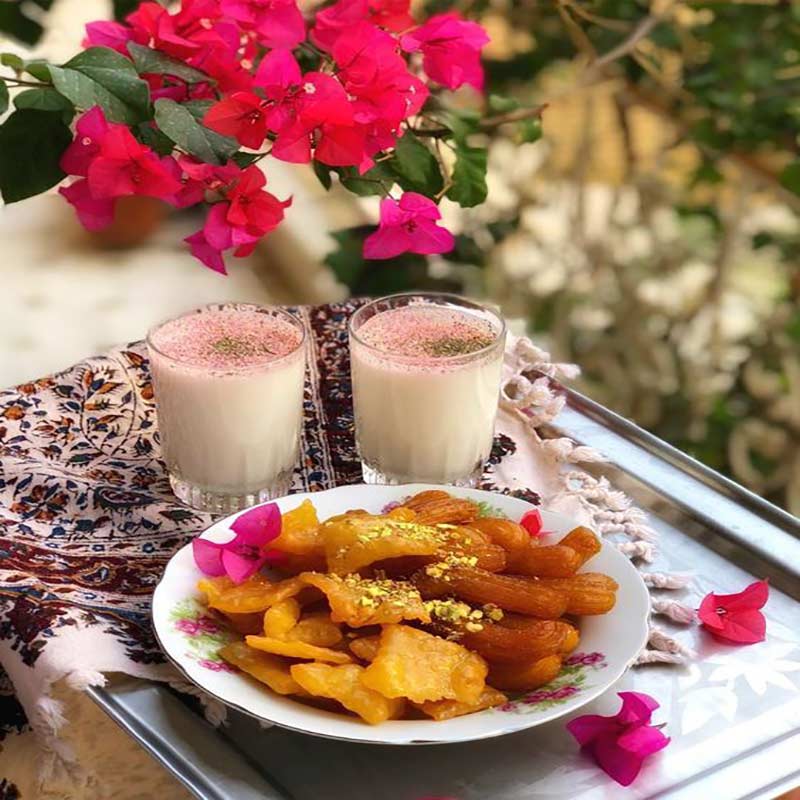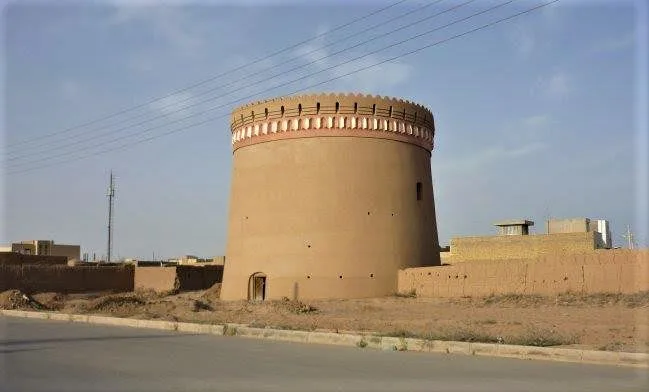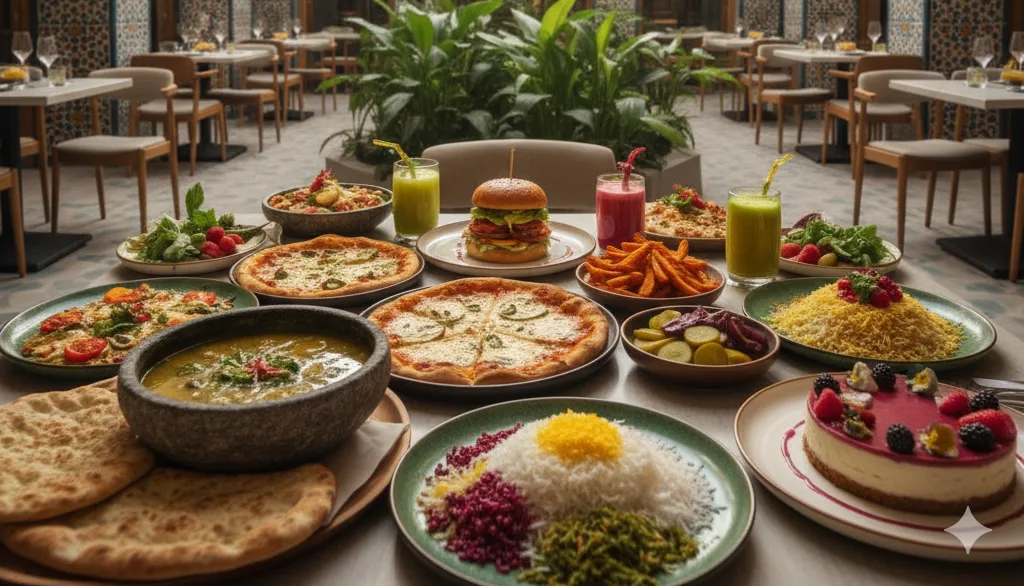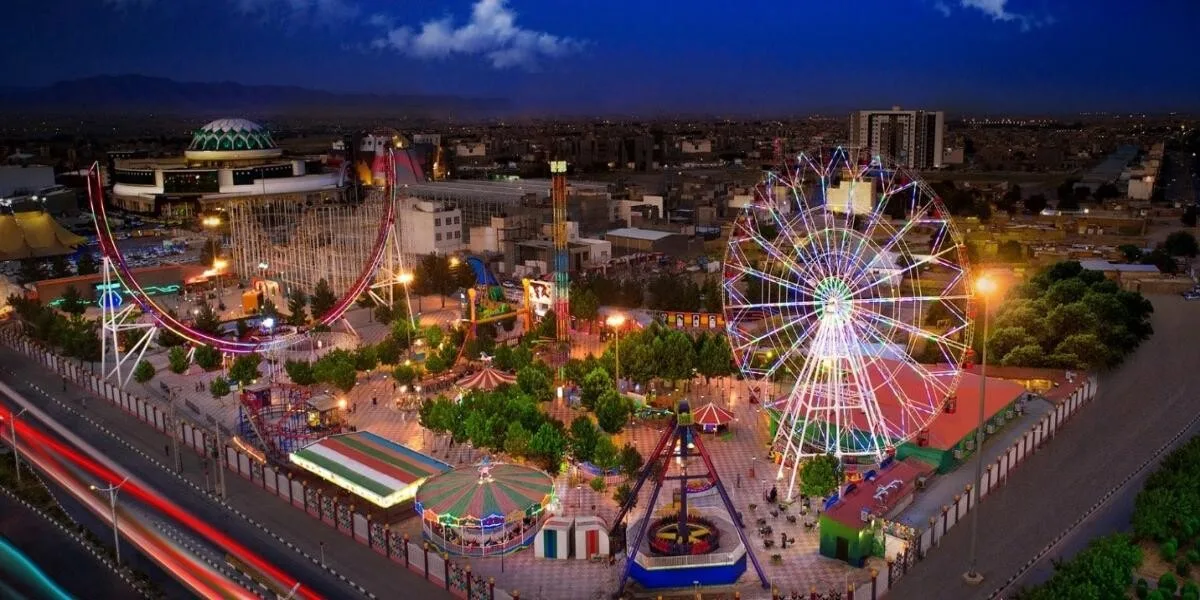Handicrafts of Tabriz | Discover the handicrafts of Tabriz and East Azerbaijan
Tabriz handicrafts, alongside its natural attractions and historical sites, captivate the attention of every traveler and are considered among the best souvenirs of the city.
Handicrafts are decorative and practical items that often have roots in the history and culture of the region and are made by hand or simple tools; hence, they are valuable. Purchasing handicrafts will be a memorable souvenir of the trip and also contributes to the growth, durability, and prosperity of these arts.
Tabriz, the capital of East Azerbaijan province, with its long history, is one of the important centers of handicrafts in Iran, the birthplace of many artists and artisans. After visiting the sights of Tabriz and exploring its traditional and historical markets, buying souvenirs and handicrafts is considered an important part of this journey. In the following, stay with this article to decide what souvenirs to buy on a trip to the first city, Tabriz.
Tabriz Leather
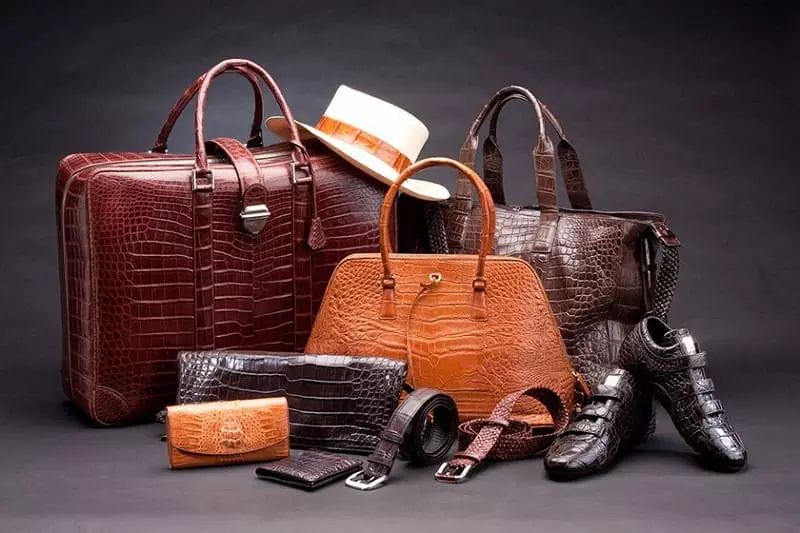
The city of Tabriz, as the capital of the leather and shoe industry, has been home to numerous leather factories and handmade and industrial shoe workshops since ancient times, supplying a significant portion of the country’s leather products. Tabriz leather products are world-renowned and recognized as one of the best souvenirs of Iran, exported to various countries. Many workshops in Tabriz are active in producing both lightweight and heavyweight leather.
The first leather factory in Iran was opened in Tabriz in 1308. The city of Chermashahr, located 10 kilometers northwest of Tabriz, is the hub of leather production in the country. Tabriz artisans have a long history of producing quality leather and a variety of leather products. About 90% of the handmade leather shoes in the country are produced in Tabriz.
Tabriz handmade shoes are listed as national treasures of the country. The production of handmade shoes has a long history, and an example of this art, which is about five thousand years old, is kept in the museum of Tabriz. The quality leather and skillful stitching of Tabriz handmade shoes are the reasons for their global popularity.
Tabriz Carpets
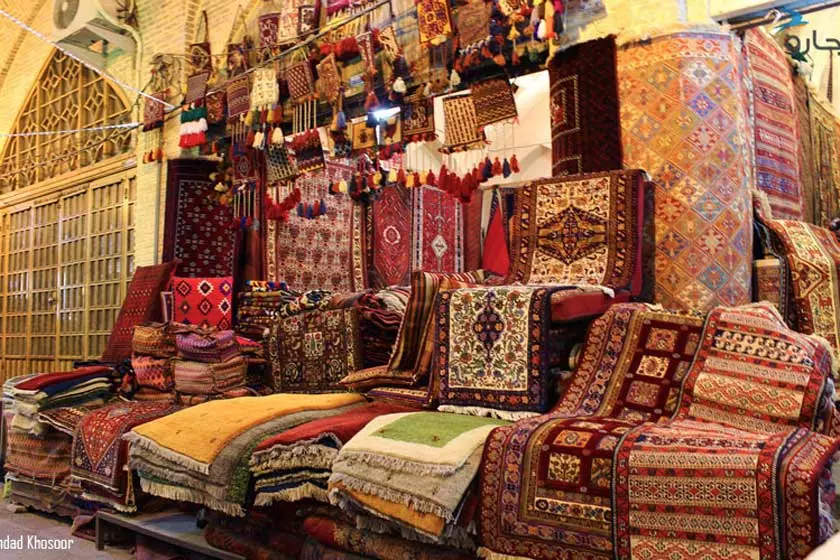
One of the most important handicrafts of Tabriz is carpet weaving, which dates back to before the Safavid period. Tabriz carpets are one of the famous types of Iranian carpets. East Azerbaijan province has been selected by the World Crafts Council as a world city of carpet weaving and has international fame. Tabriz is considered one of the oldest and most famous centers of handmade carpet weaving in the world.
Tabriz has been selected by the World Crafts Council as a world city of carpet weaving.
The raw materials used in Tabriz carpets are usually wool or silk, which has contributed to its high quality. The warps in Tabriz carpets are often cotton and durable. In these carpets, wool is used for the weft, but there are also silk carpets that are unique in their kind. The wool used in this industry is often sourced from the mountainous region of Maku, and its silk comes from Khorasan and Tehran.
The variety of designs and colors in Tabriz carpets mesmerizes every buyer. The design and weaving of these carpets are done by experienced masters of the province. The use of light and shadow in Tabriz carpets creates depth in them. The finest carpets in Iran are produced in Tabriz.
The piles in Tabriz carpets are not shiny, and this property is due to the use of saline water from Tabriz for dyeing. Carpets and tapestry rugs, handwoven and exquisite, are excellent options for souvenirs from a trip to Tabriz. Some famous designs of Tabriz carpets include Mustofi, Slimy Teranj Dari, Slimy Lachak Dari, Teranj, fish or Herati pattern, vase, Minakhani, tree design, pictorial design, garden or Golstan, and hunting design.
Kilim and Verni Weaving
Kilim
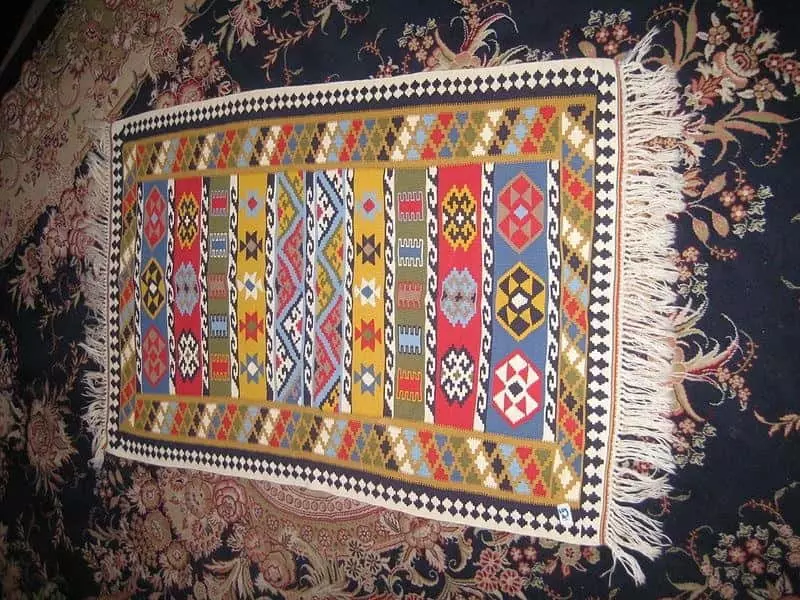
Kilim weaving is another art and handicraft of the Azerbaijani region with a long history, woven from wool, goat hair, or silk. Kilim is used for covering walls, floors, or as a rug. Traditional kilims are usually woven with natural plant-based colors and come in various rectangular sizes.
Kilims usually have two sides. Kilim weaving is more prevalent in the cities of Miyaneh, Hashtrud, and Maragheh. Shahsoon is the most famous type of kilim with prominent large designs that stand out with narrow strips separating them. Soft colors are used in Shahsoon kilims. Kilims woven among different tribes have different appearances.
Verni
Verni or Soumak is a special type of handwoven fabric made of wool, cotton, hemp, or silk, used as a rug or a throw, and is also known as tribal kilim. Verni is a one-sided, pile-less kilim woven vertically, without a pattern, by women and girls from tribes and rural areas.
Verni weaving is mostly done by tribes during the summer season when they have enough time to rest and settle. Verni weaving utilizes twisted, chevron, and geometric patterns. Since knots are not used in Verni weaving, it falls into the category of kilims; however, in terms of design, pattern, and appearance, it resembles carpets. Overall, Verni weaving is challenging and requires expertise.
Silk-made Vernis have more delicacy and beauty. These Vernis are lighter and more compact than woolen ones and attract tourists’ attention. Vernis come in various sizes and are found in colors such as crimson, indigo, white, onion, and light blue. Vernis are also used to make backpacks.
Jajim Weaving
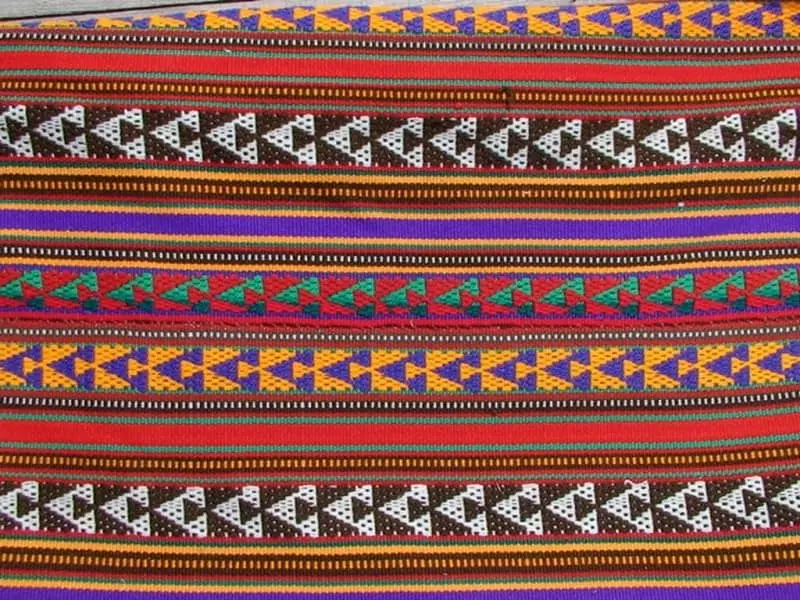
Jajim is a type of tribal handwoven fabric made from colorful and fine woolen and cotton threads or a combination of wool and cotton. Jajim is woven similar to a rug but rougher and coarser, gaining more softness due to continuous use. Jajim is a two-sided rug or throw without pile and is widely used among tribes as a cold weather protector.
Jajim, a coarse fabric, gains more softness due to use.
Colored warps are of great importance in Jajim weaving. Jajim patterns are often geometric. The main patterns used in Jajim are four-flower, brick, pentagonal, and sunflower, filled with serrated triangles on the edges. The most common colors used in Jajim are red, green, black, and blue. There is also a type of plain Jajim without any pattern, known as “Wave Jajim”.
Traditional Batik and Block Printing
Batik
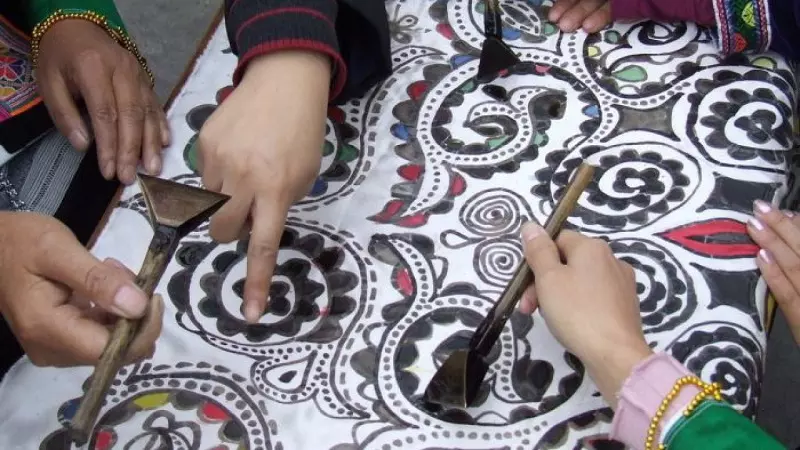
Batik or block printing is prevalent in the region of East Azerbaijan, especially in the city of Osku, and is used for indirect decoration and coloring of various fabrics. Block printing is done with or without a stamp or a combination of both methods. This type of printing is used to decorate various items such as scarves, clothing, bags, tablecloths, bedspreads, and wall hangings.
Batik printing is one of the handicrafts that does not require many tools and produces beautiful and practical products with simple tools. For this type of printing, the design is applied to the fabric using a stamp and a resistant substance such as gum, wax, paraffin, or resin.
In block printing, the fabric’s warp and weft are covered with wax, and both sides receive the same pattern. The colors used in this art are mostly plant-based, such as madder, sumac, pomegranate peel, and turmeric. The products of this type of printing also have export potential and are an excellent option for souvenirs.
Needlework Embroidery
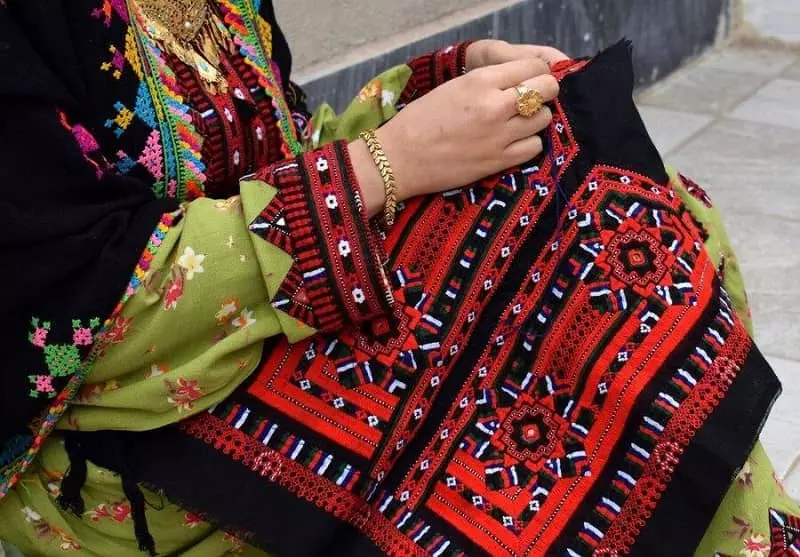
Needlework embroidery or silk embroidery is a famous handicraft of the city of Mamqan, located 42 kilometers from Tabriz. Needlework embroidery is mostly the handiwork of housewives and fills their leisure time. This art is done with silk thread on black or colored fabrics.
In the past, needlework embroidery was mostly used to decorate a kind of local hat, but today, various products such as tablecloths, belts, shoes, bags, vests, and rugs are produced. Needlework embroidery is actually a type of embroidery skill.
The patterns used in needlework embroidery are usually mental and reflect the artist’s culture, views, and interpretation of nature. Flowers and bushes are the main patterns of needlework embroidery. This art is done with simple tools such as a needle and thimble and creates very delicate and beautiful products.
Pottery
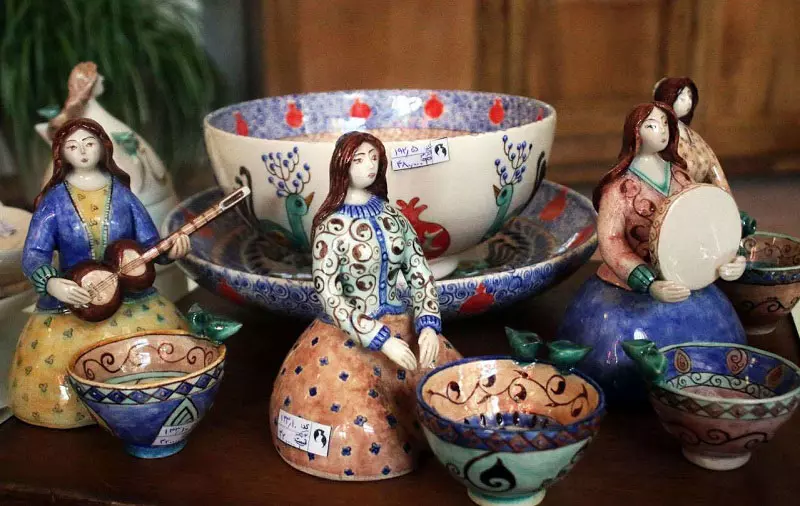
Based on historical documents discovered from about two centuries ago, pottery has been widely practiced in the pottery-making regions of Kuzehkanan and Zanuz in East Azerbaijan province. The pottery of the Kuzehkanan region is made of red clay, which is prevalent throughout the country; however, Zanuz pottery is made of white clay and is unique to a few regions.
Zanuz pottery is made of white clay.
The white clay mine, which contains kaolin compounds, is located in the village of Zanuz, near Marand city in East Azerbaijan, in the foothills of Mount Agh Dagh, and has turned this area into the country’s center for pottery making with white clay and ceramics. All stages of making these pottery are done traditionally, and its main products include plates, bowls, cups, pitchers, water jugs, teapots, and sugar bowls.White Clay Glazed Pottery: Traditional Artistry from East Azerbaijan
The glazed pottery made from white clay comes in both colorless and turquoise varieties, with the turquoise type being globally renowned. The skillful artisans of this province enhance the beauty of these handicrafts through various decorations such as painting, embossing, engraving, and filigree work. The embellishments not only add to the aesthetics but also increase the marketability and value of ceramic productions.
Traditional Design and Calligraphy
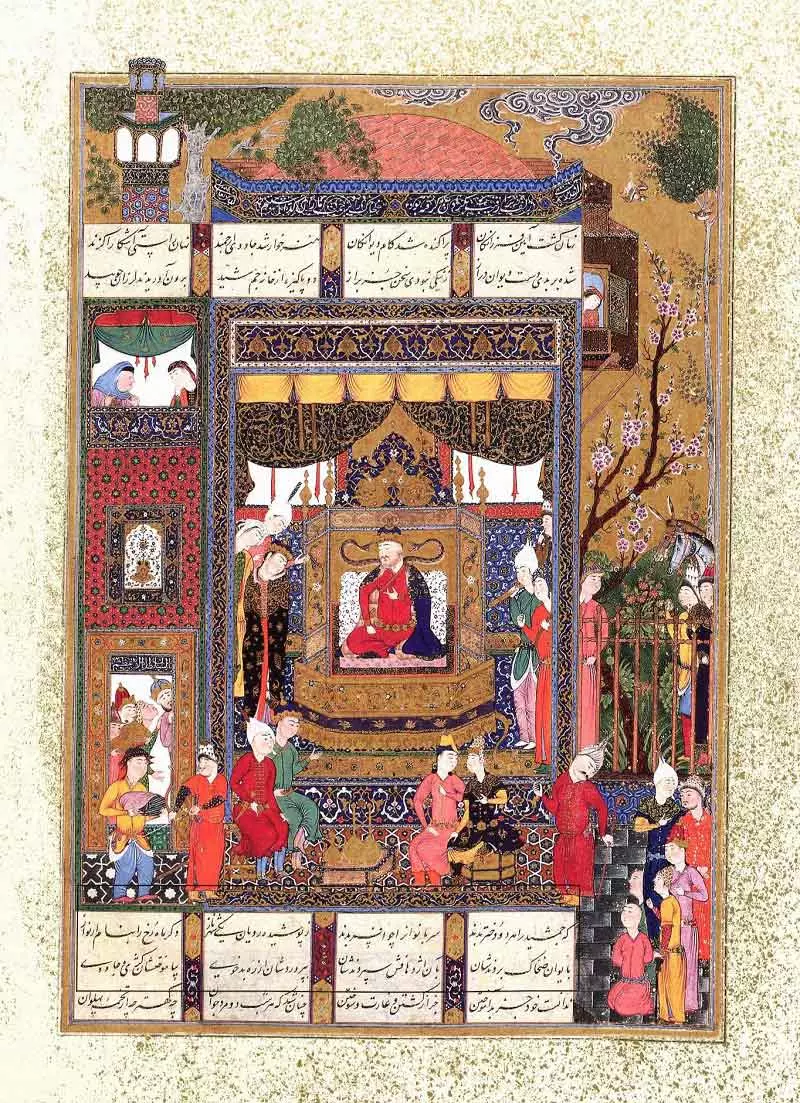
Calligraphy is considered one of the authentic arts of the country, with one of its schools based in Tabriz, Iran. Calligraphy has flourished in Tabriz since the Ilkhanate period and is now considered one of the traditional crafts of Tabriz. Calligraphy is done with color on various surfaces such as paper, parchment, or walls. This type of design has a long history of being used in illustrating various books. The beautiful and creative works of calligraphy are excellent options for souvenirs from this region.
Basket Weaving
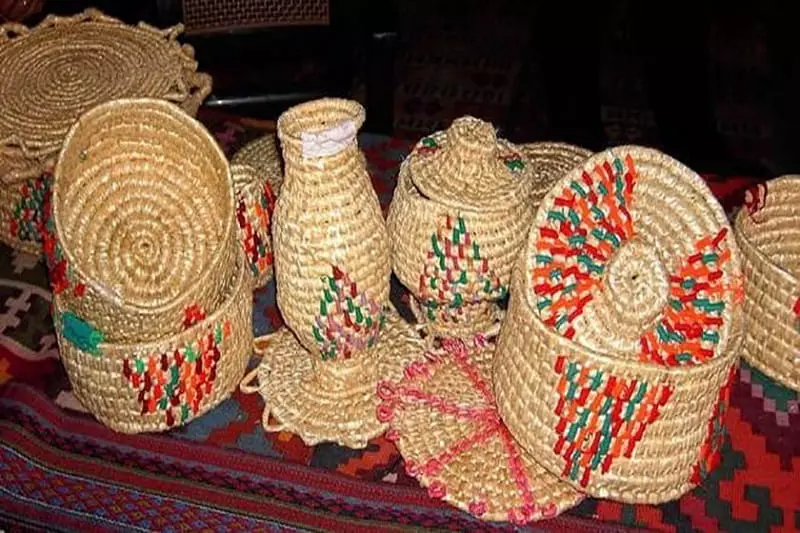
In the Marand County of East Azerbaijan province, basket weaving is thriving. The basket weaving of this city was nationally registered in 2015 due to its long history. The production of these baskets as souvenirs of Tabriz has been prosperous since ancient times. Fine willow wood or wheat stalks are used in this type of basket weaving.
The use of natural colors in decorating Marand baskets is one of the valuable aspects of basket weaving art. These baskets come in various sizes and are woven for everyday uses such as carrying bread or fruits, but nowadays, they are more for decorative purposes and artistic value.
Tabriz Basket Weaving
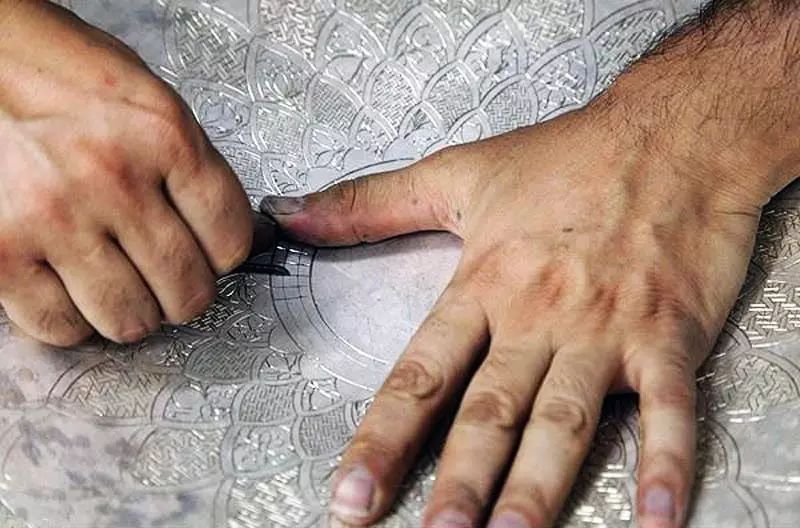
After harvesting, wheat stalks are softened with water and then used for weaving baskets. Due to the extensive wheat fields, this art is more prevalent in the village of Keshk Sara in Marand and is woven by housewives and girls to support their families’ economy.
Metal Engraving
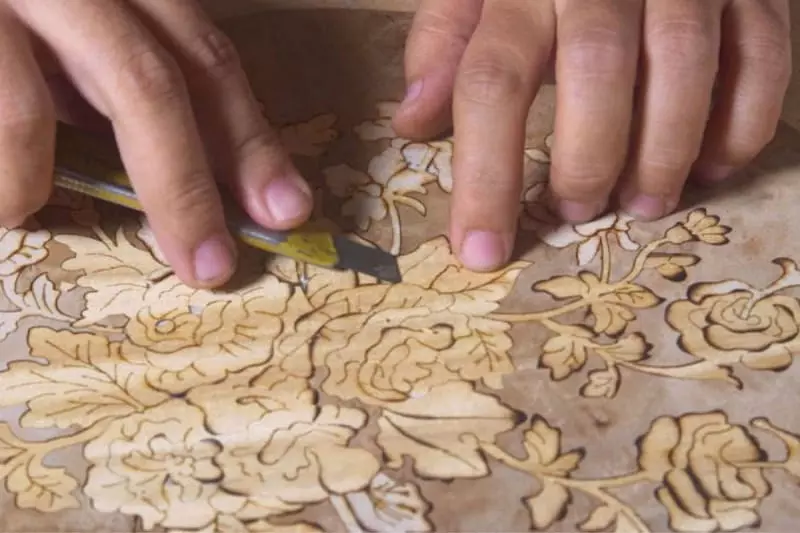
Metal engraving in Tabriz is considered one of the prominent handicrafts of this city. Although metal engraving in Tabriz shares some commonalities with Shiraz and Isfahan, it has its own unique style and context. This art, which involves carving patterns on metallic objects, is counted among the authentic handicrafts of Tabriz and has its roots in the culture and traditions of the region.
In Tabriz, metal engraving is done solely by hand pressure and with the use of a stylus. Tabriz artisans are masters of this craft, creating beautiful, delicate, unique, and eye-catching designs on metal surfaces. Products made from this art, such as engraved samovars and metal engraving panels, have gained worldwide fame.
Metal engraving in Tabriz is performed on various metals such as copper, brass, and silver. This diversity allows people from all walks of life, with various financial capabilities, to acquire these works of art. Common patterns in Tabriz metal engraving include Islamic motifs, flowers, birds, and arabesques. To begin the work, the desired pattern is first designed on the metal, and then the design is embossed using the pressure of the stylus.
Marquetry
The flourishing art of marquetry, mosaic work, or inlaying tiles in East Azerbaijan province dates back to the Seljuk period. Artists and master craftsmen decorate buildings and mosques with marquetry. In Tabriz, small marquetry tile panels are produced, which are very suitable options for decorative purposes and souvenir acquisition.
Woodcarving
Woodcarving on wood is one of the important and prominent handicrafts of East Azerbaijan. This art, which essentially involves carving and incising on wood, has been used to decorate various parts of historical works in Tabriz. Woodcarving is a delicate and precise art that requires the patience and taste of the artist, creating valuable products from inexpensive raw materials. Common motifs in this art include Islamic patterns, geometric designs, and floral and avian motifs.
Stone Inlay Panels
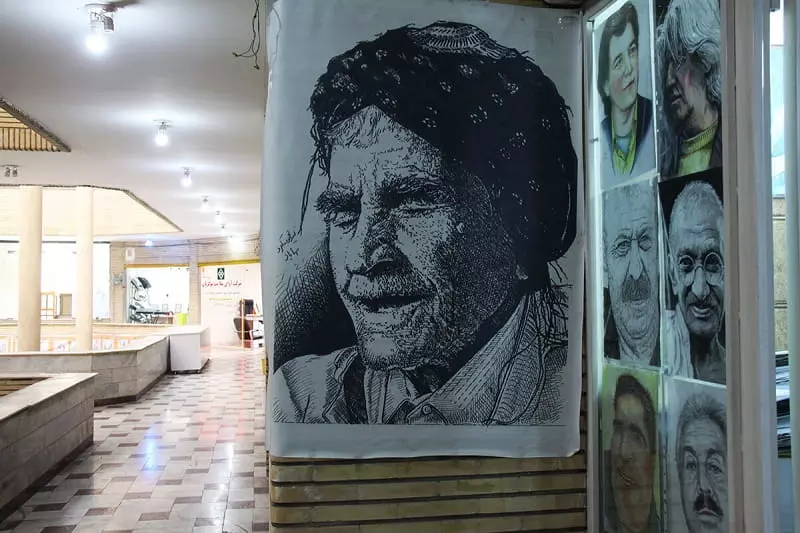
Stone inlay panels are among the new and valuable handicrafts of Tabriz. In these panels, usually images of famous and beloved figures are designed using small stones. Prominent examples of this art can be seen in Tabriz’s Park of Fame. The creative designer and innovator behind this art is a person named “Saber Asghari.” These panels are special artistic creations that have been warmly welcomed by travelers and tourists.
Traditional Jewelry
Traditional jewelry is among the famous and beloved handicrafts of Tabriz. In addition to high-carat gold, traditional jewelry in Tabriz is also made from silver and low-carat gold to cater to various segments of society. The production of these handicrafts involves seven stages carried out by skilled and artistic individuals.
The eye-catching works of authentic and valuable jewelry making art in Tabriz are sold in its traditional and modern markets. These delicate and beautiful pieces of jewelry hold a special place among the people of Tabriz and are considered precious souvenirs for any tourist.
Silverware and Silver Embossing
Silverware Crafting
The industry of silverware crafting has been prevalent in Tabriz since ancient times. This art was brought to Iran from Turkey in 1915 AD. The products of silverware crafting mainly include jewelry, practical and decorative vessels, mirrors, candle holders, and photo frames. The silver products in Tabriz, crafted by skilled artisans, are of excellent quality.
Silver Embossing

Silver embossing and engraving on silver are common arts in Tabriz, which have received UNESCO’s recognition for the authenticity of handicrafts. Silver embossing is mainly done on prayer beads. The beads of these prayer beads are made from avocado seeds, ebony, and sandalwood, commonly known as “keshkul” in Persian slang. These seeds are drilled and then filled with pure silver.
In addition to prayer beads, silver embossing is also done on other objects such as panels, canes, pipes, lighter stands, and drinking cups. This art is actually a branch of penmanship and one of the delicate handicrafts of Tabriz. In the past, silver embossing was done on items like swords and armor, but today its combination with wood has made it more popular in the market.
Where to Buy Tabriz Handicrafts?
Purchasing Souvenirs, especially handicrafts from various cities by tourists, contributes to the prosperity and preservation of authentic and valuable arts, which is highly significant. Wandering in traditional and modern markets of different cities itself has an aspect of entertainment and is counted among the attractions of traveling. Below, we aim to highlight the most important shopping centers for Tabriz handicrafts.
Grand Bazaar of Tabriz
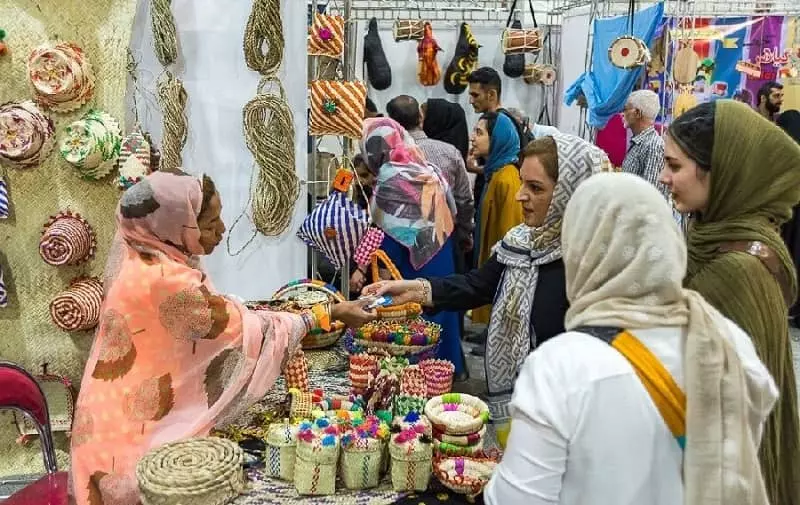
The grand and traditional Bazaar of Tabriz, covering an area of about one kilometer, is the largest covered bazaar in the world and is considered one of the most important tourist destinations and shopping centers in Tabriz. This vast bazaar was registered on the UNESCO World Heritage List in 1389 AH (2010 AD) and has a long history.
The map of Tabriz city and its central core are designed in a quadrilateral shape, with the Tabriz Bazaar located in the center of this quadrilateral. The breathtaking architecture of this bazaar attracts the attention of every art enthusiast. The grand and traditional Bazaar of Tabriz is composed of numerous markets, caravanserais, and inns, accommodating around 40 different crafts.
The traditional and grand Bazaar of Tabriz spans from the east to the splendid buildings of Qapu, from the west to the Grand Mosque, and from the north to the Mehran River. The main alleys of the grand bazaar are connected by secondary alleys, and in the spaces between them, there are markets and inns.
Address: East Azerbaijan, Tabriz, Grand Bazaar of Tabriz
Shoemakers Bazaar
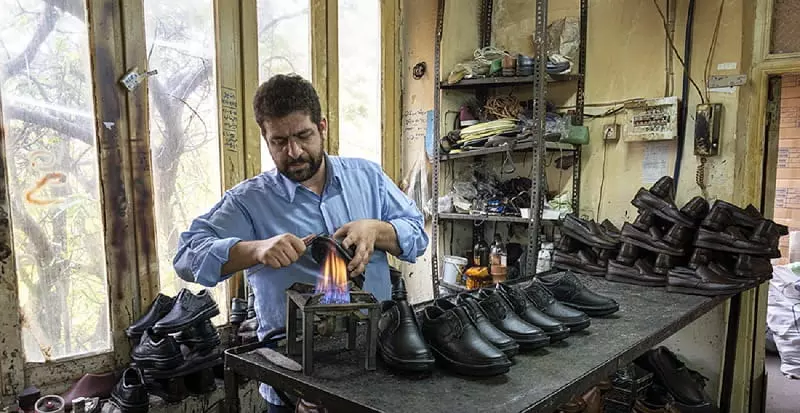
The Shoemakers Bazaar, also known as Basmachji Bazaar, is the most significant center for stitching and offering various handmade shoes in Tabriz, located in the Tabriz Traditional Bazaar. This bazaar begins from Daryai Street and continues up to the front of the Maqbarat Mosque in the axis of the new bazaar. In the Shoemakers Bazaar, suitable shoes can be found for every taste and budget.
Tabriz Pottery House
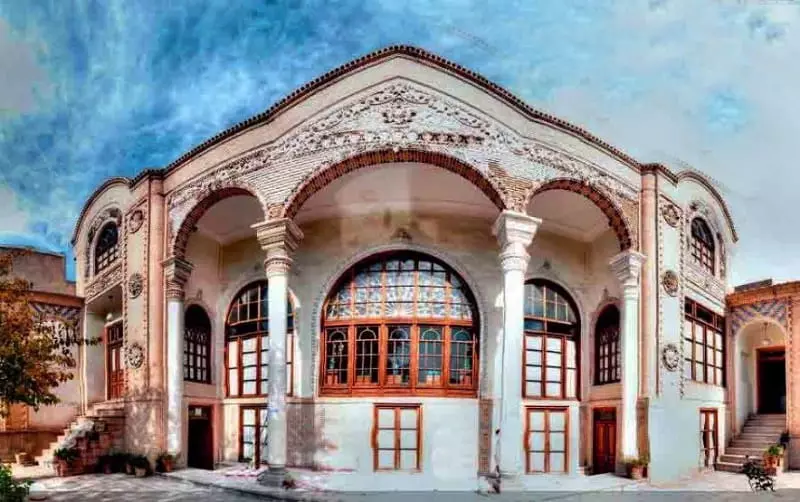
The establishment of the Living Pottery Museum and Pottery House in Tabriz has played a significant role in introducing and promoting this art among tourists. This museum is the most important center for presenting pottery in the city of Tabriz. The Pottery Museum is located in one of the old houses called the Alavi House in Tabriz and is, in fact, a permanent exhibition for education, production, and sale of pottery.
Address: Shams Tabrizi Street, Goroo Station, Sarafilar Alley, No. 100, Tabriz
Cover Photo Source: Iran Tourism
Frequently Asked Questions
What are the famous handicrafts of Tabriz?
Handmade carpets and rugs, leather products, and all-leather handmade shoes are among the famous handicrafts of Tabriz.
Which region of East Azerbaijan is famous for white clay pottery?
White clay pottery belongs to the village of Zenooz in the Marand County of East Azerbaijan, located at the foothills of Mount Aghdagh.
What is the main shopping center in Tabriz?
The Grand and Traditional Bazaar of Tabriz, covering an area of about one kilometer, is the largest covered bazaar in the world and is the main tourist and shopping destination in the city of Tabriz.
Where is the pottery procurement center in Tabriz?
Tabriz Pottery House is the living museum and the most important center for presenting pottery in the city of Tabriz. The Pottery Museum is located in one of the old houses called the Alavi House in Tabriz.


